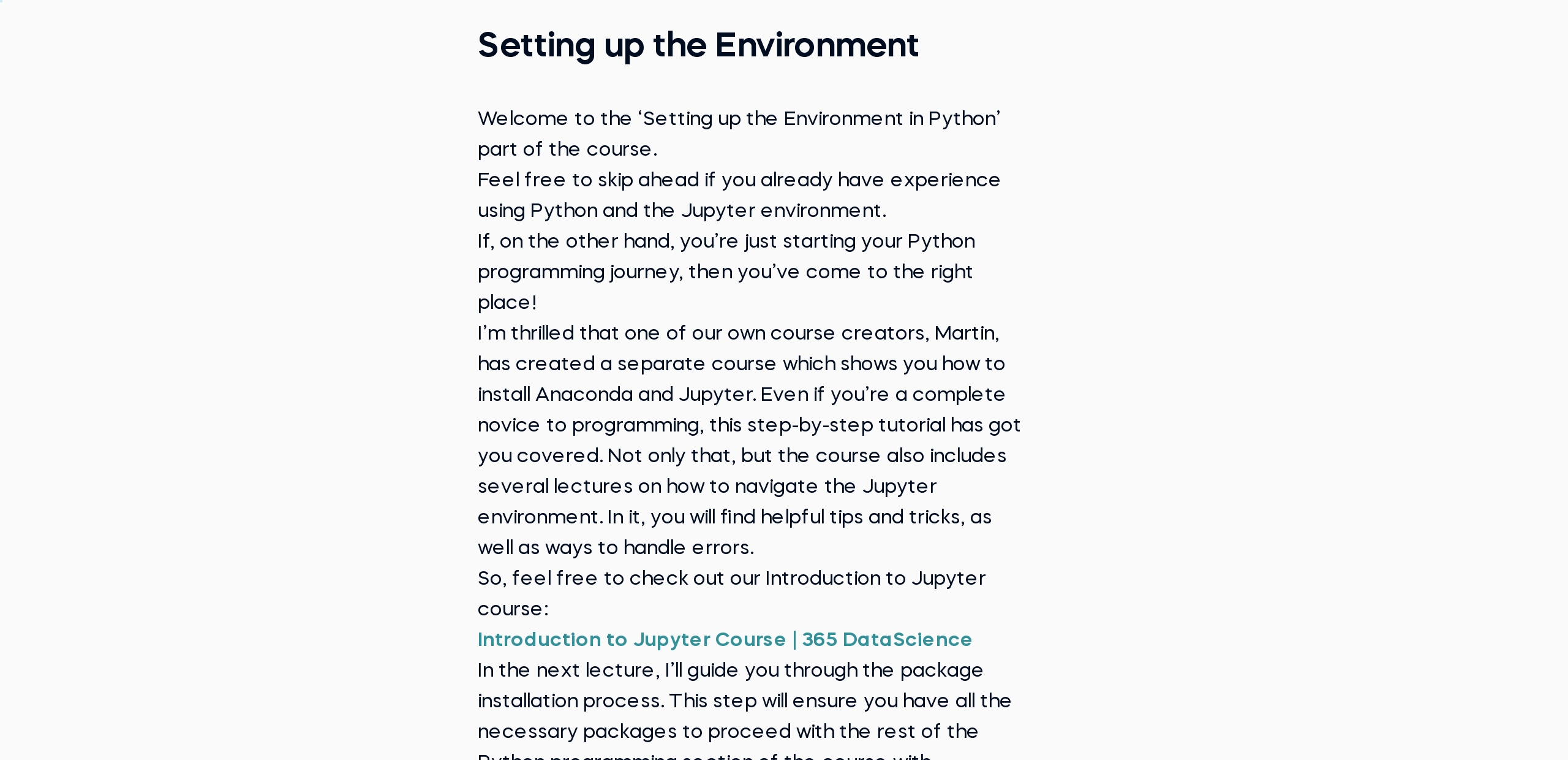Introduction to Python
Learn to code in Python: the most popular and widely used programming language
 Start for Free
Start for Free
What you get:
- 2 hours of content
- 27 Interactive exercises
- 28 Coding exercises
- 96 Downloadable resources
- World-class instructor
- Closed captions
- Q&A support
- Future course updates
- Course exam
- Certificate of achievement
Introduction to Python
 Start for Free
Start for Free
What you get:
- 2 hours of content
- 27 Interactive exercises
- 28 Coding exercises
- 96 Downloadable resources
- World-class instructor
- Closed captions
- Q&A support
- Future course updates
- Course exam
- Certificate of achievement
$99.00
Lifetime access
 Start for Free
Start for Free
What you get:
- 2 hours of content
- 27 Interactive exercises
- 28 Coding exercises
- 96 Downloadable resources
- World-class instructor
- Closed captions
- Q&A support
- Future course updates
- Course exam
- Certificate of achievement
What You Learn
- Get a proper introduction to the world of Python programming
- Master key programming concepts such as variables, data types, and conditional statements
- Solve practical Python exercises hand-in-hand with the instructor
- Build your first Python program and gain the skills to solve real-world tasks
- Get a taste of advanced Python programming techniques such as arithmetic, comparison, logical, and identity operators
- Learn how to define Python functions
Top Choice of Leading Companies Worldwide
Industry leaders and professionals globally rely on this top-rated course to enhance their skills.
Course Description
Learn for Free

1.1 Course Introduction
5 min

1.2 Setting Up the Environment
1 min

2.1 Python Variables
5 min

2.4 Understanding Numbers and Boolean Values
3 min

2.8 Strings
6 min

3.1 The Arithmetic Operators of Python
3 min
Curriculum
Topics
Course Requirements
- No prior experience or knowledge of Python is required. We will start this Python course from the basics and gradually build your understanding. Everything you need is included in the Intro to Python course
- You will need to install the Anaconda package, which includes Jupyter Notebook
Who Should Take This Course?
Level of difficulty: Beginner
- Aspiring data analysts, data scientists, data engineers, AI engineers
- Graduate students who need Python for their studies
- Everyone who wants to learn how to code in Python
Exams and Certification
A 365 Data Science Course Certificate is an excellent addition to your LinkedIn profile—demonstrating your expertise and willingness to go the extra mile to accomplish your goals.

Meet Your Instructor

Martin began working with 365 in 2016 as the company’s second employee. Martin’s resilience, hard-working attitude, attention to detail, and excellent teaching style played an instrumental role in 365’s early days. He authored some of the firm’s most successful courses. And besides teaching, Martin dreams about becoming an actor. In September 2021, he enrolled in an acting school in Paris, France.
What Our Learners Say
365 Data Science Is Featured at
Our top-rated courses are trusted by business worldwide.